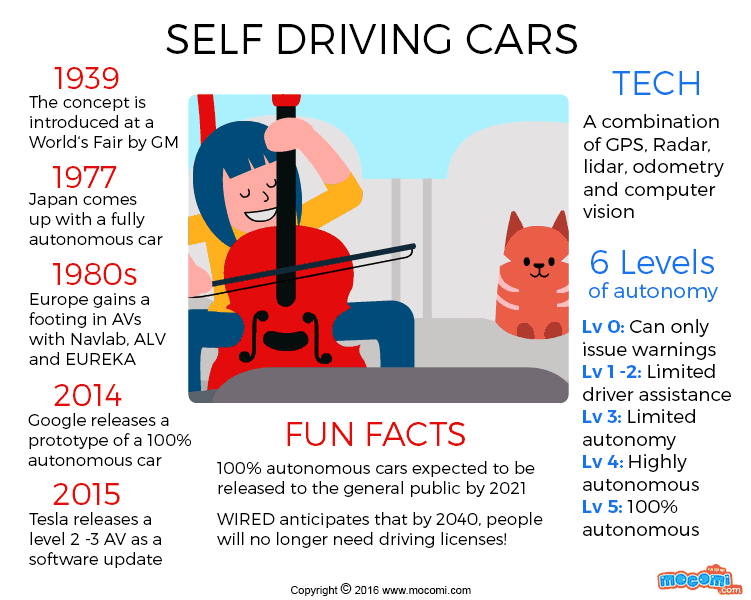The future is here thanks to science. We’re talking self-driving cars – cars that don’t need human input to make their way around. Imagine a world where you don’t need someone to drive you around. A world where accidents due to human errors in judgment are a thing of the past. Doesn’t that incredible? Let’s see how science makes this possible.
What is an Autonomous Car?
Self-driven cars, also called autonomous cars, driverless cars, AI cars or robotic cars, are cars that do not require human input to navigate while driving. They use an array of software and technologies to achieve this, including GPS, radar, lidar, odometry and computer vision. The cars are equipped with sensors that allow them to detect obstacles along the way, be it a pedestrian, another vehicle, whether parked or in transit or even a bird. And of course, they have a robust GPS system to navigate the right path to its chosen destination.
How long before we have Driverless Cars?
It may be hard to believe, but the concept of driverless cars was introduced to the world way back in 1939 at the Futurama exhibit by General Motors at the World Fair. Not surprisingly, Japan soon came up with an autonomous car that used cameras and analogue computing to process signals around 1977. Post that, the development of autonomous cars gained a footing in Europe in 1980s, with the Navlab and ALV by Carnegie Mellon University in 1984 and the EUREKA Prometheus Project by Mercedes-Benz and Bundeswehr University Munich in 1987. Since then, many major companies have entered the fray with model after model of driverless cars. With the advent of the Tesla Motor’s and Google’s autonomous cars however, the spotlight shining on this technology is brighter than ever.
6 Levels of Autonomy
There are 6 levels of autonomy to a driverless car from no autonomy to fully autonomous –
- Level 0: Where the Automation System (AS) has no vehicle control, but may issue warnings.
- Level 1:Driver must be ready to take control at anytime. AS may include features such as Adaptive Cruise Control (ACC), Parking Assistance with automated steering, and Lane Keeping Assistance (LKA) Type II in any combination.
- Level 2: The driver is obliged to detect objects and events and respond if the AS fails to respond properly. The AS executes accelerating, braking, and steering and can deactivate immediately upon takeover by the driver.
- Level 3: Within known, limited environments (such as freeways), the driver can safely turn their attention away from driving tasks.
- Level 4: The AS can control the vehicle in all but a few environments such as severe weather. The driver must enable the AS only when it is safe to do so. When enabled, driver attention is not required.
- Level 5: Other than setting the destination and starting the system, no human intervention is required. The AS can drive to any location where it is legal to drive
Tesla motors first rolled out the Tesla Autopilot in 2015 with a software update. Naturally, everybody was excited about the autopilot feature. The autopilot feature ranked at a level 2 or 3. The car saw its first fatal accident in May 2016, and Tesla Motors has since doubled its already considerable efforts to remind drivers that even with the Autopilot feature, drivers still have to remain alert and ready to take control of the vehicle.
Google’s Driverless Cars
Google has also rolled out prototypes of “Google cars” the smiley faced cute cars that are 100% autonomous, i.e. level 5. This means they don’t have steering wheels, or gas / brake pedals. Google cars are undergoing rigorous tests to ensure their safety before they’re released to the general public. They’ve also had some minor accidents and Google is working diligently to learn from these accidents and improve the user experience.
Going by the various declarations by the top motor companies, we could all hope to be “driving around” our own driverless cars by 2021 – just as soon as they figure out a way to get around the existing technical and legal obstacles. So, are you looking forward to giving up vehicle control to simply relax and enjoy the drive?


